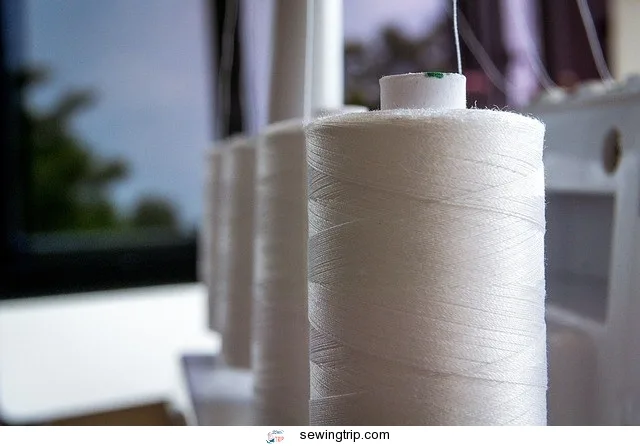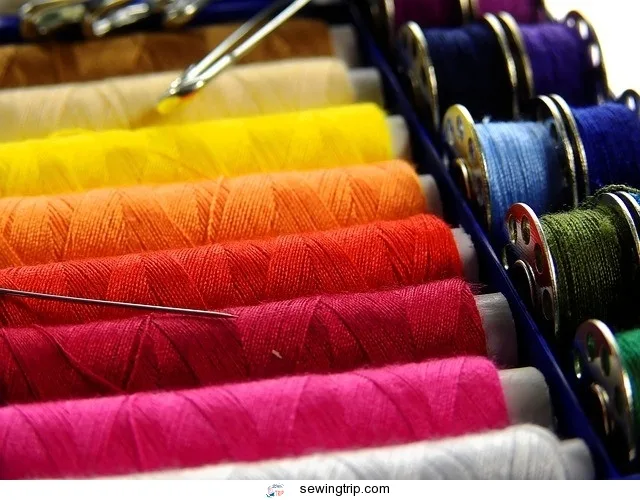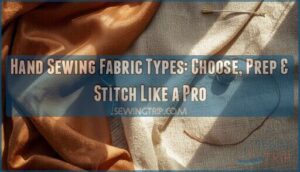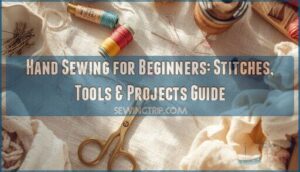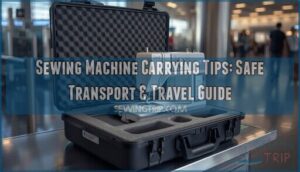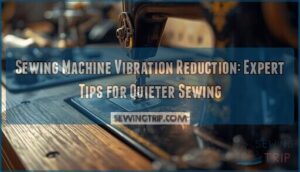This site is supported by our readers. We may earn a commission, at no cost to you, if you purchase through links.
Those who have been tinkering and sewing long enough have undoubtedly seen a variety of tools to aid their work, but how do you know what you need to succeed?
Although most home workers know all about their trusty sewing machine, a quick tour of your local fabric store will undoubtedly find displays of serger sewing machines with their tangled threads like an overzealous spider.
Do you need one? What is a serger sewing machine used for?
For that matter, what is a sewing machine with a sewing machine? How many does it cost, and is it worth the investment? Let’s see.
Table Of Contents
Definition of a Serger Sewing Machine
A Serger Sewing Machine as an overlock machine. It is like a regular sewing machine, but instead of a traditional straight stitch, it binds the fabric together with an overlook stitch.
An overlook stitch with three or four different threads, hence all the bobbins on top of the machine, making it look both regal and downright scary.
As a bonus, it uses a blade to cut the fabric for you as you use it, resulting in less manual labor when making beautiful crafts.
The chief reason people would use a sewing machine is because it creates a very durable stitch. You can see the overlook stitch on the seams of almost all commercial clothing.
Look at the edge of your sleeve – see a stitch with an almost honeycomb pattern on the bottom. With multiple threads used to make this overlook stitch, it is much less easy to unravel and can withstand the demands of everyday wear and multiple washes.
Most garment companies use industrial versions of servers when they make the products you wear every day, not only because it creates such a durable stitch but also because they are fast and efficient little tools.
This kind of stitch works especially well for stretch fabrics, and you’ll almost always see this kind of overlook stitch on your favorite yoga pants or sweatshirt.
If you’re looking for an industrial touch your blankets, clothes or other fabrics, this machine will bring it home for you.
Traditional sewing machine vs. Serger
So why would you need both machines? Well, most of you are familiar with a regular sewing machine – it uses a single thread and bobbin to create a variety of stitch patterns based on the needs of your project.
Some machines may have two threads if you use a double needle. Most sewing machines have a long neck and different feet to use on fresh materials and for different purposes.
They can also help you make buttonholes, zippers and even small embroidery patterns.
A serger uses two to five threads each time. The type of stitch is also different. A serger can only use the overlook stitch (although some more expensive machines can use other stitches!).
A serger sewing machine cannot perform various functions, such as buttonholes like a traditional machine. However, the serger cuts the fabric as it binds it together, saving you a step from a normal sewing machine. It also runs much faster, has a shorter neck and can only sew on the left side of the needle.
For some projects, this is an important distinction because you will unable to turn and let it run from the right side. The speed at Welch a serger does its job, however, is a wonder to see!
How does a Serger sewing machine work?
A serger uses three, four or five threads to sew a seam, trim the raw edges and finish the edges all at once.
Most servers allow you to turn off the knife feature if you have a project you don’t want to cut while you’re at it.
As with most machines like this, the more money you spend, the more options you have for functions.
Let’s inspect the different options of servers. Some machines offer these functions:
- A Two to four wire Serger: A various functions allow you to you can make a true safety stitch or a two-thread overlook stitch. Some other types of serger machines don’t allow you to go as low as two threads. At least two threads in each operation and you can use them to make each stitch separately.
- A Three- to Four-thread Serger: This machine can work with three or four threads. A four-thread stitch will give you a wider and stronger seam, but both features will give you a secure, stretchy seam. Most of these machines also allow you to create a rolled hem by replacing the throat plate. Using the four-thread stitch, you can create a fake safety stitch, which is like a regular safety stitch, but not as strong.
- A Five-Thread Serger: These machines are usually the most expensive, but also give you the most options. You can create an overlook edge or a straight seam line, which allows you to do more on your project without switching machines. While it doesn’t eliminate your need for a regular sewing machine for functions like zippers, buttons, and facings, it gives you more flexibility and power for your projects.
How much does one cost? Serger sewing machine?
As with traditional sewing machines, a serger can range from $100 to $5,000 depending on the brand name, features, and how durable it is.
Fortunately, unless you’re using it for industrial, you shouldn’t have to spend more than $500 on a quality machine.
Talk to your local representative at your craft store or repair center for sewing machines, and they will certainly point you to a good recommendation. a seamstress’s favorite. There are plenty of resources to help you get what you need, all within your budget.
As with all sewing machines, the key to the longest life of your sewing machine to get. is to use it properly and keep it clean.
If you decide to purchase an overlook machine, please refer to your owner’s manual for information on basting, cleaning and storing your machine.
Although they look intimidating, servers are actually very easy to use, so with a little caution you can view your serger as an investment for your future projects, rather than just another toy that will collect dust.
Once you use your machine, you will surely love it.
Do you need a serger for your project?
Since servers for zooming and edging; the question is really: what is your project? If you often make clothes, this machine will not only save you time but also make your finished project more sturdy.
For example, if you were sewing a pair of trousers on a traditional sewing machine, you will need to cut the fabric, make a zigzag stitch on the underside to prevent fraying, fold the hem, iron in place, turn and iron again, and then finally the bottom hem.
If you’re using a serger, though, all you need to do is serve the bottom edge, then fold it over once and sew through. Note that you will still need a traditional machine to finish unless you prefer to top stitch by hand. But the serger certainly saves you a lot of steps and provides a firmer stitch than a zigzag stitch on a regular machine.
A serger is especially useful with stretch fabrics, as they slide less. quick out on this machine and the stitches will stay put better.
If your projects mainly contain things like quilts, bags, purses and a lot of woven fabrics, a serger probably isn’t necessary.
Some quilters like to use servers, but the extra thread can make the top look lumpy. Woven fabrics for totes and purses, and while a seam will help prevent fraying of these materials, the stitch will not remain as strong as a regular straight seam.
Plus, most bags have the seam on the inside anyway, so that the threads are not visible and do not experience the same wear and tear as with clothing.
General opinion ]
Now that you understand what a sewing machine is, how it performs and what projects it is best for, let’s break it down into simpler terms.
Pros
- Much faster than a traditional sewing machine
- Stitching, cutting and hemming all at once
- Many options available for different price ranges and project needs
- Can save you a lot of time and steps when making clothes
- Overlock stitch is a very strong stitch that makes your projects last longer
Cons
- Doesn’t do other functions like zippers and buttonholes
- You still need a traditional sewing machine to finish almost all projects
- Is not useful for woven materials and projects such as bags and quilts
- Can be challenging to thread and clean
- Adds another relatively large machine to your workspace
Here’s a video with an example of a serger and its functions.
In the end it comes down to what projects you will use the most to know whether a serger would be a worthy investment, but for many hobbyists it is an invaluable and timesaving tool.
Do you have a serger sewing machine? Do you recommend it?

